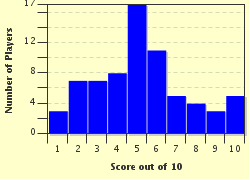Quiz Answer Key and Fun Facts
1. Philippines: During the Spanish colonial era, Mexican immigrants to the Philippines brought over Catholic religious zeal and the idea for a holiday treat called puto bumbong. The rice known as pirurutong is steamed inside a bamboo shoot and served with butter and sweetened coconut. What color is this rice?
2. Norway: The Vikings, living in Norway in the late 900s, created the dish called lutefisk that has become a Christmas tradition over the years for Scandinavians. Lutefisk starts with a dried fish, usually cod, that is soaked in water with an additional important ingredient. What else gets put with the cod to give it a Jello-like consistency?
3. England: The Christmas pudding dates back to medieval times when it was served as a savory meat dish. Over the years, it morphed to a sweet treat and comes with centuries-old traditions such as "Stirring Sunday", flaming, and coin additions. True or False: One of its alternate names is plum pudding and this is because one of its main ingredients is this dark colored fresh fruit.
4. Venezuela: The hallaca is considered a national dish of Venezuela but is primarily served at Christmas. It dates its beginning back to the people in Mesoamerica who made tamales as early as 5000 BC. The hallaca is a dish that consists of a meat filling surrounded by corn dough with additions such as raisins, nuts, and olives. It is then wrapped in a banana or plantain leaf. How is this stuffed leaf then cooked before storing or serving?
5. Japan: Although Christmas in Japan is not considered a religious holiday, it is celebrated as a time of friendship and romance. The Japanese, since the early 1970s, go pick up some fast food on Christmas day. What chain popularized this tradition so much that families book orders there up to three months in advance?
6. Israel: People of the Jewish faith celebrate Hanukkah for eight days and nights during the holiday season. A popular dish served at this time is a potato latke. This form of the small pancake dates back to the 1800s but its preceding recipe is found as early as the fourteenth century. Before potatoes became the main ingredient, what was used to make the latkes, thanks to the Book of Judith?
7. China: Tangyuan is a dish comprised of rice flour balls, either stuffed or not, that can be savory or sweet. They are enjoyed all year but are traditionally associated with holidays such as the Lantern Festival or the Winter Solstice in December, known as the Dunzhi Festival. Multiple balls are placed in a broth and served in a bowl. What does tangyuan, with history dating back to the Han dynasty, represent?
8. Canada: During Christmas Eve many Canadians will celebrate with a large meal in which a meat pie called a tourtiere is served. It is traced back in Canada to the 1600s and can be filled with a variety of different meats or fish. It gets its name from the deep dish in which the pastry is placed. From what Canadian province does this food originate?
9. Czechoslovakia: The Czechs celebrate on Christmas Eve with activities such as decorating a tree, giving gifts, and eating a large dinner. The meal typically consists of several dishes including fish soup. This dish, dating from monasteries in the 1300s, is made from adding parts of a carp to water, root vegetables, and spices. Where is the live fish often kept prior to cooking it?
10. France: On Christmas Eve, many families celebrate with a large meal which is finished by slicing into a Buche de Noel. This rolled sponge cake is filled with fruit preserves or chocolate and topped with icing and decorations. This dessert is based on a tradition dating back to the Iron Age in Europe. What object, found in a forest, does the cake resemble?
Source: Author
stephgm67
This quiz was reviewed by FunTrivia editor
WesleyCrusher before going online.
Any errors found in FunTrivia content are routinely corrected through our feedback system.

